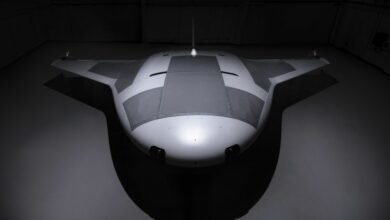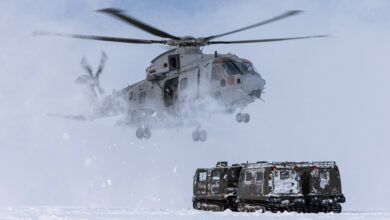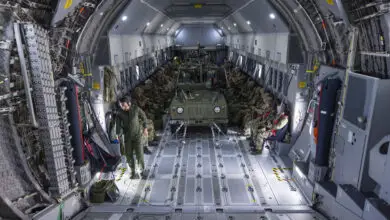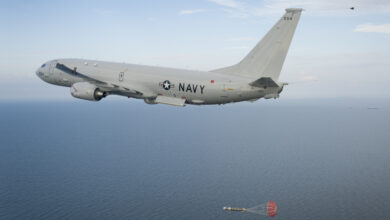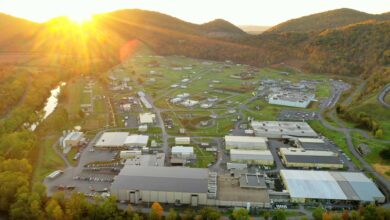UK Wedgetail E-7A Aircraft Receives First Sensor
The UK Royal Air Force’s first Wedgetail E-7A airborne early warning and control aircraft has received a multi-role electronically scanned array (MESA) sensor.
Developed by Northrop Grumman, the MESA system will enable the E-7A to monitor its surroundings over 360 degrees in flight.
The sensor will assist airmen in detecting, identifying, and tracking targets at longer ranges while maintaining continuous surveillance in an operational area.
The sensor is integrated into a fin on the spine and fitted to a reinforced fuselage section.
“This installation of the MESA sensor is a tangible demonstration of the progress being made toward the phenomenal capability of Wedgetail entering RAF frontline service,” Royal Air Force Staff Capability Assistant Chief Air Comm. Alex Hix said.
“This highly complex technology is undeniably exposed to the challenges facing global supply chains and I am grateful to all involved in the programme for their continued work and dedication.”
Future Wedgetail E-7A Fleet
The Wedgetail E-7A development was ordered by UK Defence Equipment and Support (DE&S) from Boeing to add a fleet of long-range air surveillance and control capabilities for the Royal Air Force.
Three E-7As are being built by 100 engineers at the STS Aviation Services facility in Birmingham.
Alongside Northrop Grumman, Boeing partnered with Hamble Aerostructures, Leonardo, and Thales for the program.
Once completed, the E-7A fleet will be assigned to the 8 Squadron at RAF Lossiemouth.
“This is a hugely complex programme that is being delivered in a difficult global supply chain environment given the challenges of the last two years,” explained Richard Murray, Director of DE&S Air Support.
“Installation of the world-leading MESA sensor on the first aircraft marks a key milestone in the development of the UK E7 Wedgetail fleet and reflects the hard work of all of the project’s partners.”


